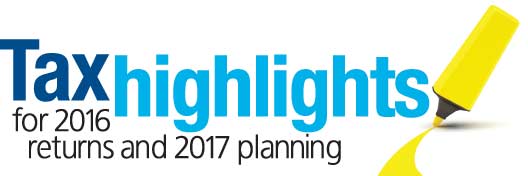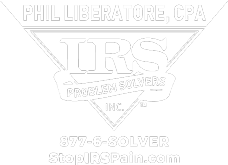Reap the most savings with early planning for changing conditions
You already know that tax laws — and your opportunities to plan for them — change regularly. This year, with comprehensive tax reform a real possibility, early planning, combined with a commitment to adapt to changing conditions, will help you reap the most savings. Here are suggestions to get you started.
Your itemized deductions
Regardless of what other tax changes Congress makes, it’s likely that a deduction for charitable donations will be preserved. To benefit, keep all the records required so you can claim a full deduction for your charitable gifts. For instance, if you give a monetary gift of $250 or more, obtain a written acknowledgment from the charity at the time of the gift.
You may also want to consider making a contribution of appreciated property in 2017. Typically, you can claim an itemized deduction of the fair market value of an asset when you donate property you’ve owned longer than a year. In addition, by donating the asset, you don’t have to pay tax on the gain.

One more way to benefit from charitable contributions: the IRA-to-charity rule that you can use when you’re age 70 1/2 or older. The rule lets you make a donation to your favorite charity with money from your IRA while using the amount you donate as an offset of some or all of your required minimum distribution. Though you can’t take a deduction for the charitable contribution, not having to claim the income from the required distribution can garner other benefits.
Your home offers a variety of tax breaks that are also likely to remain in effect during and after 2017. These benefits, which currently include deductions for mortgage interest and real estate taxes, offer opportunities for tax savings as well as financial planning benefits. For example, you can generally deduct mortgage interest on loans you take out to buy your home. To get a current-year tax deduction while reducing the overall amount of interest you’ll have to pay, you might consider refinancing your acquisition debt into a shorter-term loan.
Also consider a preventive bit of planning for a tax break you hope you’ll never have to use: casualty losses. Generally, you can deduct losses for damage to personal property in excess of 10% of your adjusted gross income (after subtracting $100 per casualty). Take photos or videotapes now so you can show the condition of your property before and after any casualty.
Your retirement plans
Retirement plan contributions are tax-saving winners for multiple reasons, which is why establishing a regular contribution schedule early in the year is standard tax planning advice. The contribution limit for 401(k) plans for 2017 is $18,000. You can make an additional catch-up contribution of $6,000 when you’re age 50 and over, for a total yearly contribution of $24,000.
In addition to your 401(k), you can contribute to your own IRA. The maximum contribution for 2016 and 2017 is $5,500, with an additional $1,000 catch-up contribution if you’re 50 or over. Your IRA also gives you the opportunity for late 2016 tax planning, because you can make a contribution for 2016 up until the April due date of your federal income tax return.
Your investments
Taxes can be a frustrating headwind against investment earnings. Part of the impact can be offset by location-aware investing. That’s a fancy way of saying you can save taxes on your portfolio income by making what would normally be taxable sales within your tax-deferred retirement account. In a taxable portfolio, consider investments that offer little or no dividend income, but instead generate non-taxable unrealized gains over time. If you’re looking into a mutual fund, research the fund’s dividend or capital gain payment schedule to time your purchases around taxable distributions.

When selling an appreciated security, pick shares you have owned for one year or more to qualify for the long-term capital gain tax rate. That’s generally 15%, while gain on stocks held less than a year can be taxed at rates as high as 39.6%. Selling a security that has lost value might also be a benefit. You can offset your capital gains with capital losses, and even offset up to $3,000 in ordinary income when capital losses exceed your gains.
Your business
Incorporate planning to make spending money on growing your business a tax-wise event. For example, you might want to treat a client or customer to a meal. When you meet for a business breakfast or lunch, you can deduct 50% of the meal, giving you a tax benefit while improving your business relationships.
Updating your professional skills is another opportunity to get a tax benefit. Schedule professional conferences during 2017 that will improve your current skills. With some limitations, travel to and from the conference, lodging, and related out-of-pocket expenses, as well as the actual conference cost, are tax deductible.
Finally, make time early in the year to review your business form. Your choice of entity plays an important role in the tax planning strategies you can use. Determine if your current entity type is the best for your business, or if a change might open up possibilities for tax savings.
Contact our office for more tax planning tips and tax-saving strategies, as well as updates on current changes to the rules. We’re here to help.
© MC 2017








